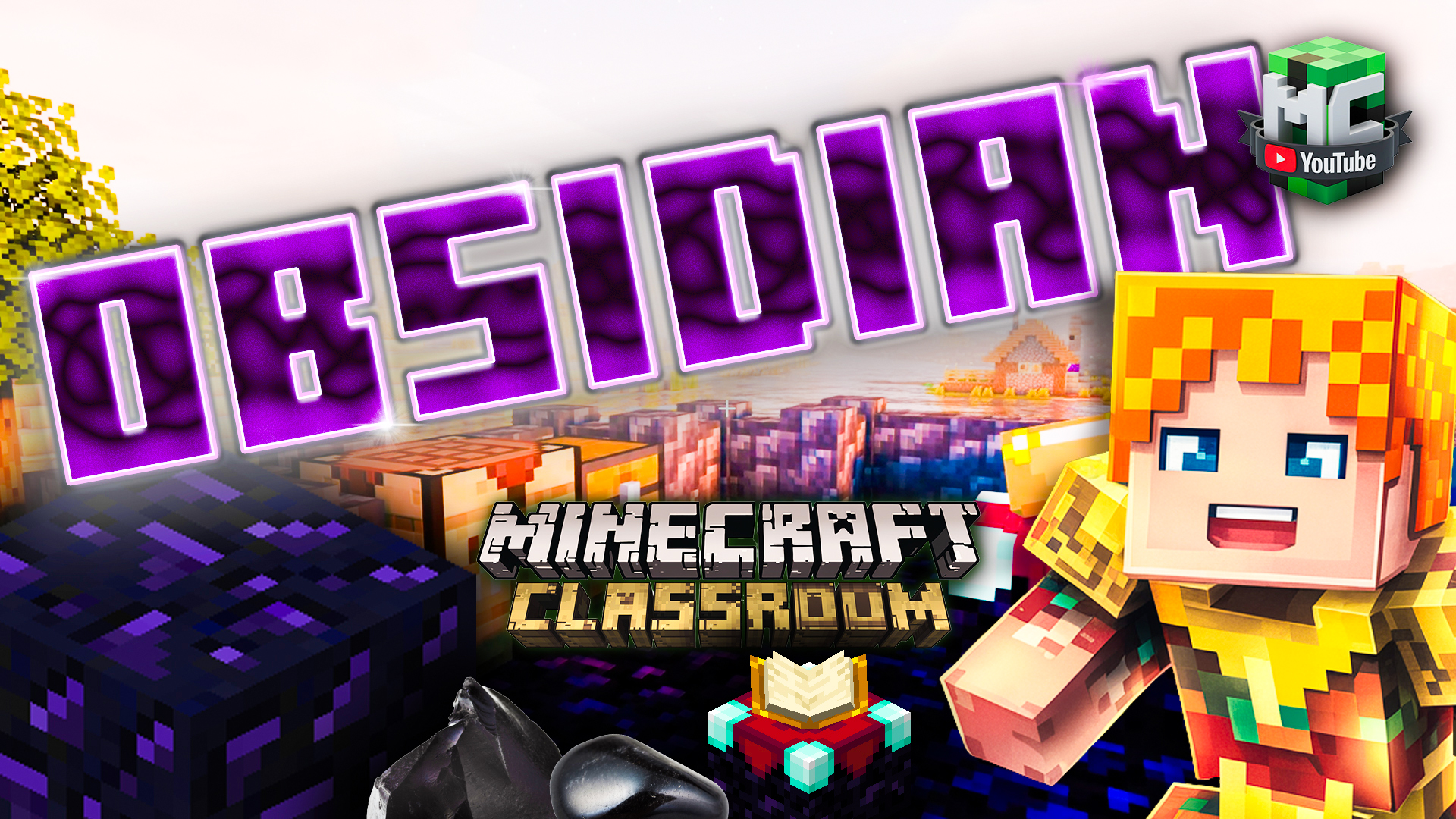
This UNBREAKABLE Block is Actually GLASS in Real Life?!
In our previous Minecraft Classroom episode, we explored how Nether quartz powers modern technology with its precise vibrations. Today, we’re diving into something completely different – obsidian, the mysterious black block formed when water meets lava.
What Makes Obsidian Special in Minecraft?
In the vast Minecraft universe, few materials showcase such dramatic contrasts between worlds as obsidian. Within the game, it’s nearly indestructible, requiring diamond tools to mine. Yet in reality, obsidian is an extremely brittle volcanic glass. Despite this fragility, it creates edges so impossibly sharp that laboratory tests show they’re 500 times sharper than the finest steel scalpels!
This remarkable property explains why obsidian tools are still used in specialized modern surgeries where this ancient technology outperforms our most advanced metals.
How Obsidian Forms: The Science Behind the Block
Finding obsidian requires witnessing the perfect natural reaction: water flowing onto lava. One misstep and you’re swimming in molten trouble! The transformation happens instantly as glowing orange lava darkens and solidifies when water touches it.
In Minecraft:
- Water + lava source block = obsidian
- Requires diamond pickaxe to mine
- Essential for portals and enchanting tables
In Real Life:
- Formed by rapid cooling of volcanic lava
- Creates microscopic edges just atoms thick
- Historically valued more than gold by some cultures
What looks simple in Minecraft actually mimics a complex geological process. The water’s cooling effect completely transforms the lava’s molecular structure, turning flowing liquid into one of the hardest substances in the game.
No Diamond Pickaxe? Try the Casting Method!
If you don’t have a diamond tool to mine obsidian, there’s a brilliant workaround: the casting method. By strategically placing lava sources and flowing water over them, you can create obsidian exactly where you need it. This technique gives perfect control over placement:
“When water meets lava to create obsidian, it releases superheated steam that rapidly expands – a scientific phenomenon accurately reflected in both Minecraft’s hissing sound effect and real-world volcanic interactions.”
Obsidian Throughout Human History
Archaeological discoveries reveal obsidian was traded across thousands of miles in ancient times, more valuable than gold in many cultures due to its practical applications. From ancient sacrificial knives to modern eye surgery, obsidian’s perfect edge connects our past to cutting-edge medicine.
The Aztec Connection
The Aztecs, along with other Mesoamerican peoples like the Maya and Olmec, mastered obsidian crafting. They created weapons called macuahuitl – wooden clubs lined with razor-sharp obsidian blades that Spanish conquistadors described as frighteningly effective. From practical tools to sacred artifacts, obsidian was truly their most versatile resource.
Beyond Building: Obsidian’s Special Uses in Minecraft
Obsidian isn’t just for construction – it’s the gateway to advanced gameplay:
- Nether Portals: The primary use for obsidian, creating doorways to Minecraft’s underworld
- Enchantment Tables: Four obsidian blocks with a book and two diamonds creates a magical crafting station
- Beacons: Obsidian bases can protect your beacon pyramids from explosions
- End Crystals: Combining obsidian with glass and an Eye of Ender
It’s fascinating how the same obsidian that creates portals between dimensions also helps transform ordinary equipment into magical gear. Obsidian truly bridges the gap between the mundane and the extraordinary in the Minecraft universe.
Educational Value: What Kids Learn From Obsidian
| Subject Area | Learning Opportunity |
|---|---|
| Geology | Volcanic glass formation, amorphous vs. crystalline structures |
| History | Ancient trade networks, Mesoamerican civilizations |
| Chemistry | State changes, molecular structures in rapid cooling |
| Engineering | Tool design, material properties, construction techniques |
Tips for Parents and Educators
When exploring obsidian with young Minecraft players, consider these discussion points:
- How do game mechanics reflect real-world science?
- Why might ancient peoples value obsidian more than precious metals?
- What modern technologies still use natural materials like obsidian?
- How does understanding the real properties of materials enhance gameplay?
Conclusion: Bridging Virtual and Real Worlds
Our obsidian exploration stands as a testament to both Minecraft creativity and ancient ingenuity. This remarkable volcanic glass connects our game to thousands of years of human innovation. From accidental creeper encounters to Aztec craftsmanship, obsidian’s story bridges virtual and real-world discovery.
“Remember, in both Minecraft and history, the strongest materials come from the most extreme transformations.”
Join us next time at the Minecraft Classroom, where every block has a story!
Frequently Asked Questions About Obsidian in Minecraft
How do you make obsidian in Minecraft?
Obsidian forms when water flows directly onto a lava source block. You can create it by pouring water buckets onto stationary lava pools.
Can you make obsidian without a diamond pickaxe?
Yes! While you can’t mine obsidian without a diamond pickaxe, you can create it in specific locations using the “casting method” described in this article.
How long does it take to mine obsidian?
With a diamond pickaxe, it takes about 9.4 seconds to mine obsidian. With a Netherite pickaxe, it takes approximately 8.35 seconds. Using Efficiency enchantments significantly reduces this time.
Why is obsidian so important in Minecraft?
Obsidian is essential for crafting Nether portals, enchantment tables, and other advanced game elements. Its blast resistance also makes it valuable for securing areas against explosions.
Does obsidian exist in real life?
Yes! Real obsidian is a naturally occurring volcanic glass formed when lava cools rapidly, typically near water. Unlike in Minecraft, real obsidian is actually quite brittle but can form extremely sharp edges.